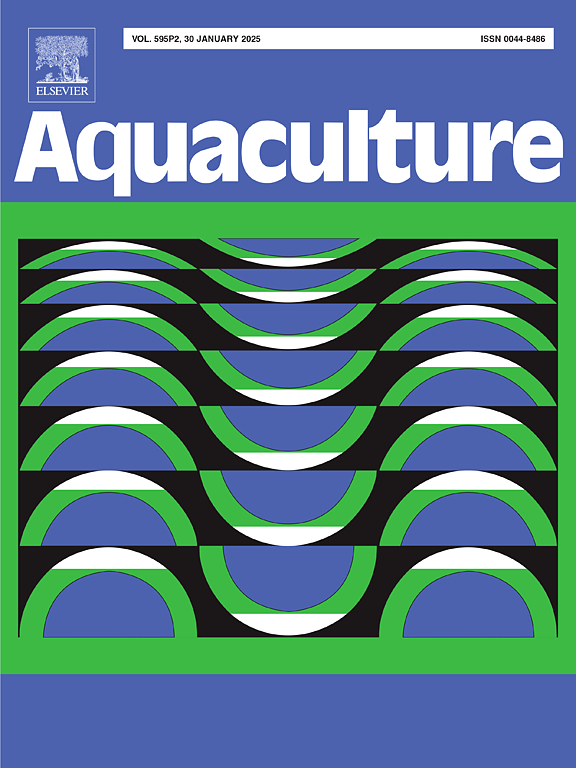Effects of compound probiotics on intestinal and liver transcriptome, immunity and disease resistance of zig-zag eel (Mastacembelus armatus)
IF 3.9
1区 农林科学
Q1 FISHERIES
引用次数: 0
Abstract
Probiotics have gained widespread application in aquaculture owing to their high safety profile and lack of antibiotic resistance, thereby enhancing the immune function of fish.
In this study, zig-zag eels (Mastacembelus armatus) were fed with BC (Bacillus cereus G1-11), EA (Exiguobacterium acetylicum G1-33), MIX (a compound probiotic consisting of G1-11 and G1-33), PC (commercial probiotics) and CON (without probiotics) for 8 weeks, followed by an Aeromonas vickerii challenge. Intestinal transcriptomic analysis revealed significant upregulation of unsaturated fatty acid biosynthesis pathways in the compound probiotic group, alongside enrichment of ABC transporters, galactose metabolism, and C-type lectin receptor signaling pathways. Probiotic supplementation elevated immune-related gene expression in the spleen and enhanced serum antioxidant enzyme activity (superoxide dismutase and catalase) and splenic immunoenzyme levels. After the challenge, the MIX group exhibited the highest survival rate (53.33 %). Histopathological analysis further revealed minimal hepatic and intestinal tissue damage, accompanied by enhanced immune activity in this group. Our findings indicate that the G1-11/G1-33 consortium bolsters innate immunity, oxidative stress resistance, and disease resilience in M. armatus, underscoring its potential as a functional feed additive for sustainable aquaculture practices.
复合益生菌对锯齿鳗肠道和肝脏转录组、免疫和抗病能力的影响
益生菌因其安全性高、不耐抗生素等特点,在水产养殖中得到了广泛应用,从而增强了鱼类的免疫功能。在本研究中,用BC(蜡样芽孢杆菌G1-11)、EA(乙酰出口杆菌G1-33)、MIX(由G1-11和G1-33组成的复合益生菌)、PC(商业益生菌)和CON(不含益生菌)喂养z型鳗(Mastacembelus armatus) 8周,然后用维氏气单胞菌进行攻毒。肠道转录组学分析显示,复合益生菌组的不饱和脂肪酸生物合成途径显著上调,同时ABC转运蛋白、半乳糖代谢和c型凝集素受体信号通路富集。补充益生菌可提高脾脏免疫相关基因表达,提高血清抗氧化酶活性(超氧化物歧化酶和过氧化氢酶)和脾免疫酶水平。攻毒后MIX组存活率最高,为53.33%。组织病理学分析进一步显示,肝和肠组织损伤最小,并伴有免疫活性增强。我们的研究结果表明,G1-11/G1-33联合体增强了M. armatus的先天免疫、氧化应激抗性和疾病抵御能力,强调了其作为可持续水产养殖的功能性饲料添加剂的潜力。
本文章由计算机程序翻译,如有差异,请以英文原文为准。
求助全文
约1分钟内获得全文
求助全文
来源期刊

Aquaculture
农林科学-海洋与淡水生物学
CiteScore
8.60
自引率
17.80%
发文量
1246
审稿时长
56 days
期刊介绍:
Aquaculture is an international journal for the exploration, improvement and management of all freshwater and marine food resources. It publishes novel and innovative research of world-wide interest on farming of aquatic organisms, which includes finfish, mollusks, crustaceans and aquatic plants for human consumption. Research on ornamentals is not a focus of the Journal. Aquaculture only publishes papers with a clear relevance to improving aquaculture practices or a potential application.
 求助内容:
求助内容: 应助结果提醒方式:
应助结果提醒方式:


